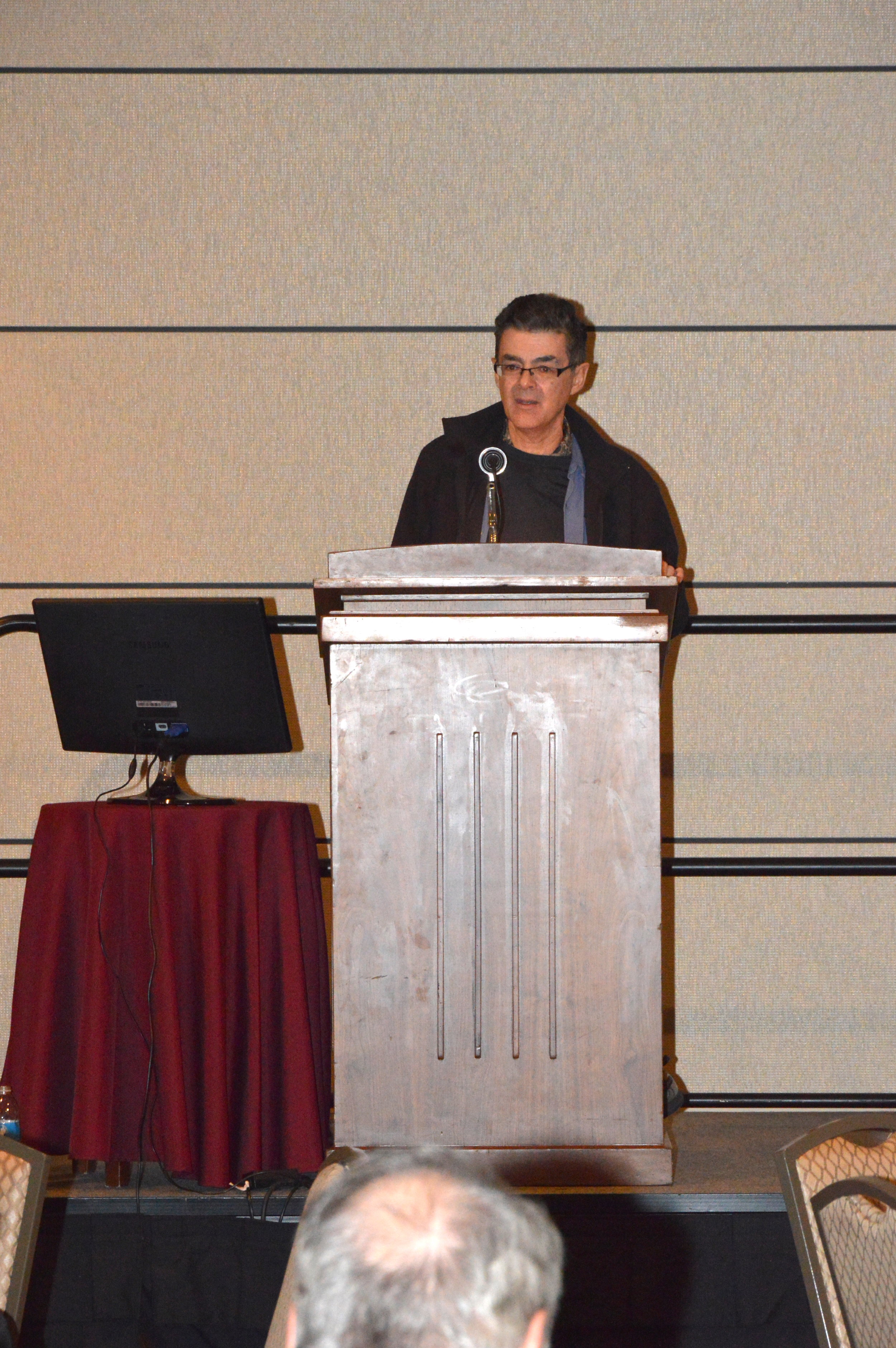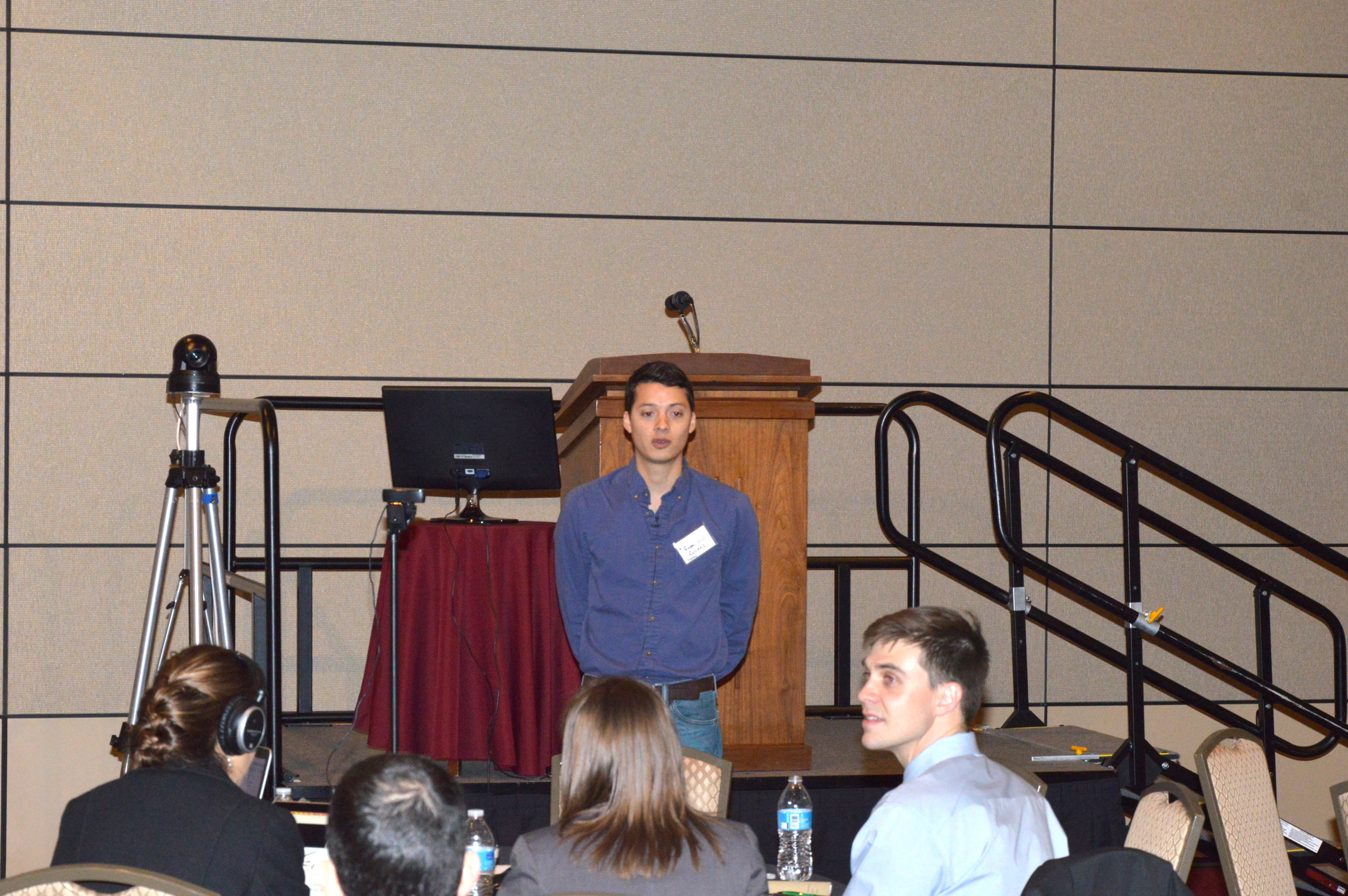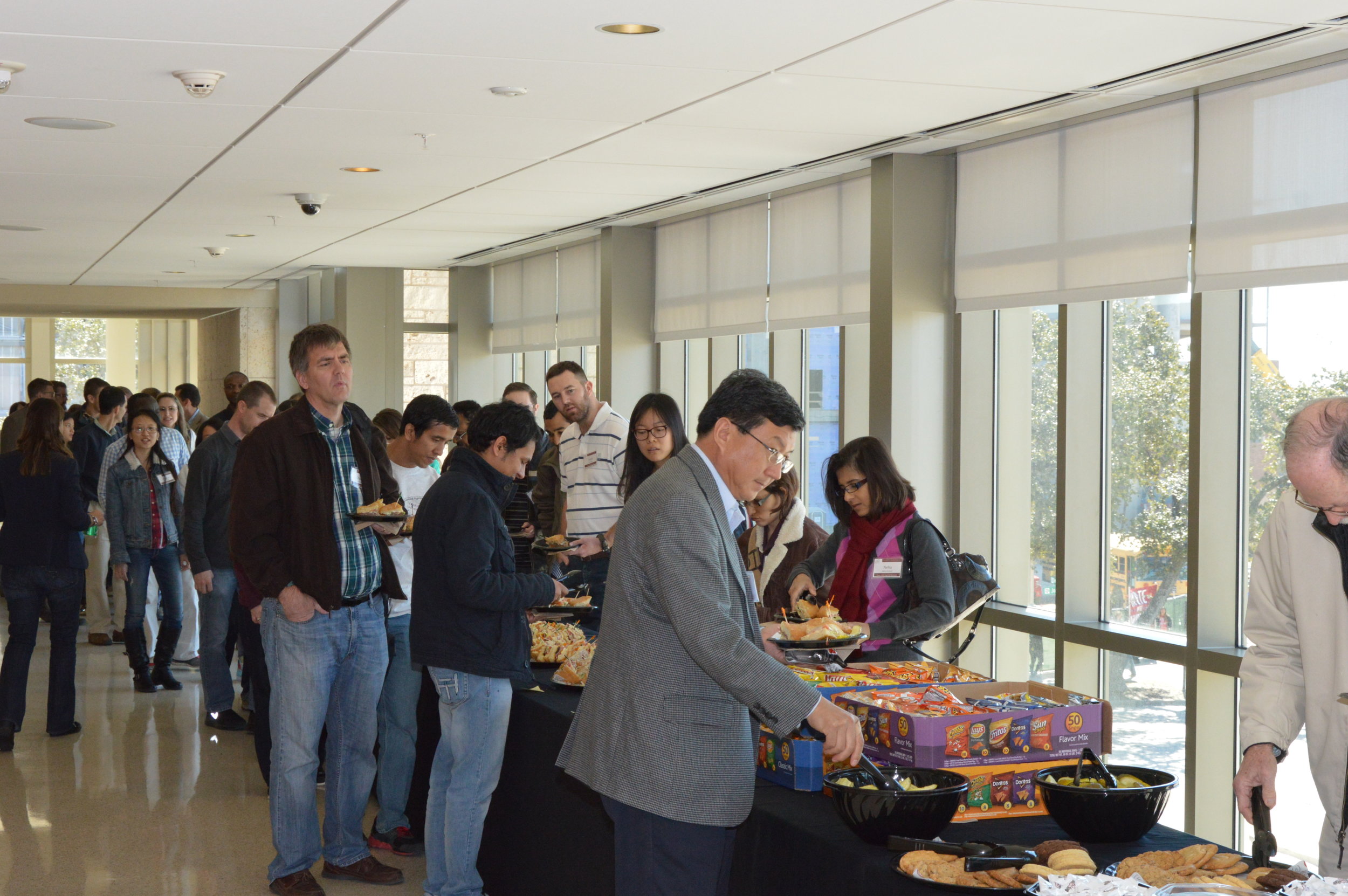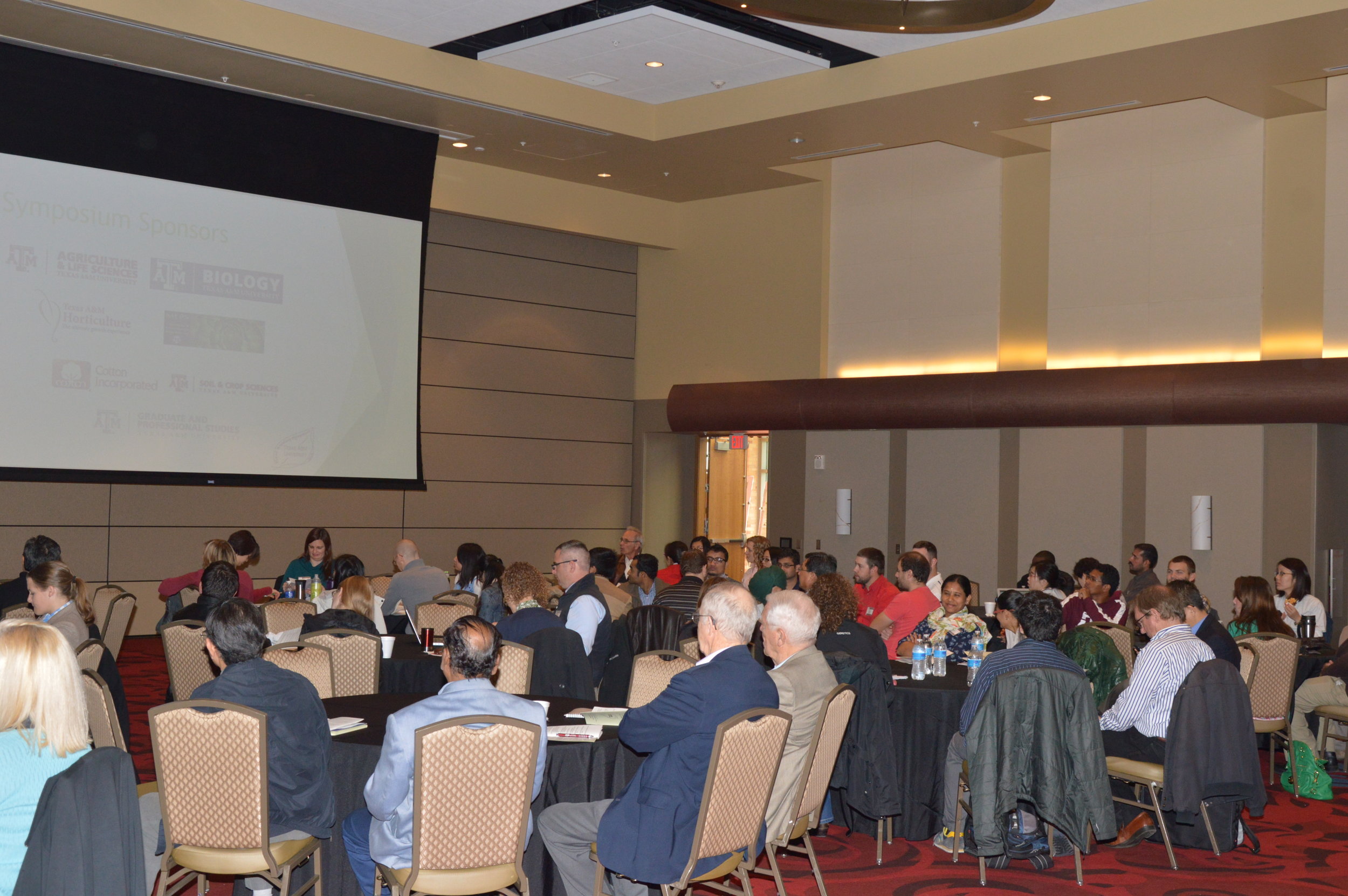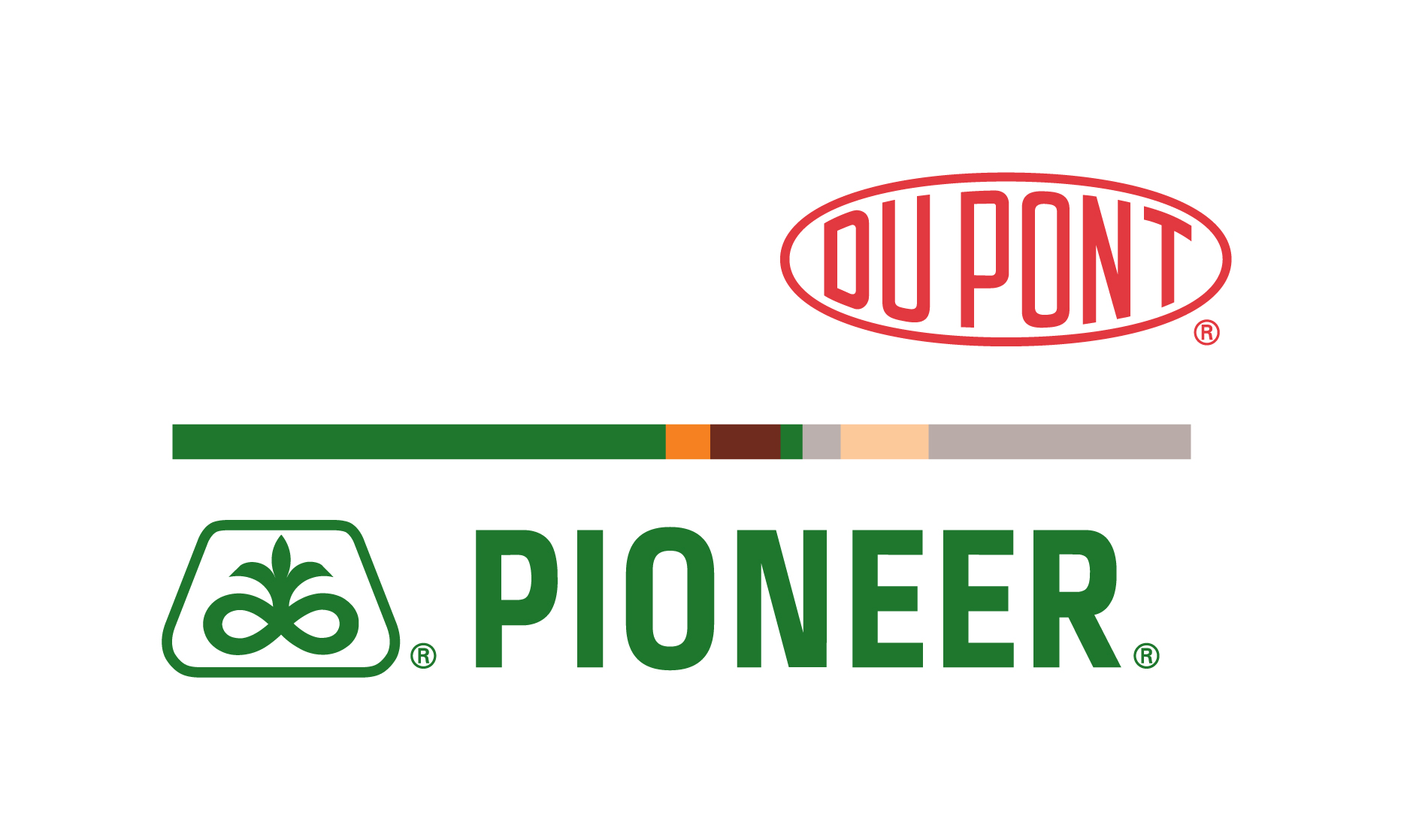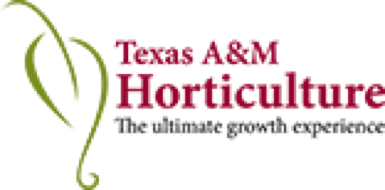2015 Keynote Speakers
Michael Gore, Ph.D.
Associate Professor, Plant Breeding and Genetics
Cornell University
Bio: Michael Gore is an associate professor of molecular breeding and genetics for nutritional quality and international professor of plant breeding and genetics at Cornell University, where he is a member of the faculty in the Plant Breeding and Genetics Section in the School of Integrative Plant Science. Michael is also a faculty fellow in the Atkinson Center for a Sustainable Future and Cornell Institute for Food Systems.
The Integration of Nutritional Genomics and High-Throughput Phenotyping: Progress and Prospects for Climate-Resilient High Provitamin A Maize
Abstract: Global climate change and nutritional deficiencies are major challenges facing a burgeoning human population over the next century. Maize is an important global staple crop, particularly in sub-Saharan African countries where it can account for more than 50% of daily calories. With considerable variation in grain carotenoid composition, maize could have far-reaching impact in the global South where vitamin A deficiency is prevalent. Through a genome-wide association study of the maize nested association mapping (NAM) panel, associations were detected between several candidate genes relevant to the biosynthesis and retention of carotenoids and quantitative levels of carotenoids in grain. As a corollary, results from an analysis of RNA-seq data derived from a catalog of six stages of grain development across the NAM founder lines revealed that genetic control of carotenoid composition is largely regulated at the transcriptional level. In addition, we demonstrated the accuracy of statistical regression models built on marker sets with different levels of genome coverage for predicting carotenoid levels in a 281-inbred line association panel. Through the leveraging of field-based, high-throughput phenotyping approaches developed for QTL mapping of developmental and physiological traits on a time axis, efforts are now underway to develop climate-resilient orange-grain maize varieties with high levels of provitamin A.
Title: Integration of Nutritional Genomics and High-Throughput Phenotyping: Progress and Prospects for Climate Resilient High Provitamin A Maize. Global climate change and nutritional deficiencies are major challenges facing a burgeoning human population over the next century. Maize is an important global staple crop, particularly in sub-Saharan African countries where it can account for more than 50% of daily calories.
Jianming Yu, Ph.D.
Associate Professor, Plant Breeding
Iowa State University
Bio: Jianming Yu is a Pioneer Distinguished Chair in Maize Breeding and associate professor in the Department of Agronomy, Iowa State University. The focus of Yu’s program is to combine maize breeding with cutting-edge genomic technologies to address significant questions in quantitative genetics. Dr. Yu's research integrates knowledge in quantitative genetics, plant breeding, genomics, molecular genetics, and statistics, and has the ultimate goal to develop and implement new strategies and methods in trait dissection and crop improvement.
Genomic Selection: Historical Context, Technical Details, Empirical Findings, and Perspectives
Abstract: The era of high throughput genotyping and phenotyping presents opportunities and challenges to plant breeding. Advances have been made in many different areas, but integration of these advances into plant breeding requires the upgrading of synthesis framework, in which quantitative genetics plays a critical role. In this talk, I will explain the historical context of genomic selection and demystify the procedure of genomic selection. An empirical example of genomic selection with using 1,000 biomass sorghum accessions will be presented, with the integration of germplasm information, genotyping-by-sequencing, selective phenotyping, and statistical methods comparison. Perspectives for further research in genomic selection, genotype by environment interaction, crop modeling, and heterosis research will be presented.
Title: Genomic Selection: Historical Context, Technical Details, Emperical Finidings, and Perspectives. The era of high throughput genotyping and phenotyping presents opportunities and challenges to plant breeding. Advances have been made in many different areas, but integration of these advances into plant breeding requires the upgrading of synthesis framework, in which quantitative genetics plays a critical role.
Fred Gmitter, Ph.D.
Professor, Horticultural Sciences
University of Florida
Bio: Fred Gmitter works with citrus breeding and genetics for variety improvement. One of the tools he uses is genomic research to develop efficient ways to select improved plants and enable cloning and manipulation of important genes. Dr. Gmitter also uses mutation breeding and tissue culture techniques for seedless variety development. Other areas of interest include germplasm acquisition and applied genetic transformation research.
The Current State of Citrus Breeding: Impending Calamity and Genetic Improvement Options
Abstract: Application of the principles of plant breeding to woody perennial plants is inherently challenging. In the case of citrus breeding, the challenge is magnified by unique aspects of reproductive biology, the nature of the economically important “species”, and most recently the threat of calamity posed by the rapid spread of Huanglongbing (HLB), also known as citrus greening disease. A general overview of citrus genetic improvement targets and the approaches that have been employed to achieve them will be provided as background. The nature and impact of HLB on citrus plants, on the world’s citrus industries, and in particular the genetic options and strategies that are being exploited to provide solutions to this global threat against the world’s most economically significant fruit crop, will be presented. Given the scope of the challenge and the potential magnitude of the impending disaster, researchers are exploring the full range of genetic improvement options available. All options are on the table and no stones remain unturned!
The Current State of Citrus Breeding: Impending Calamity and Genetic Improvement Options Application of the principles of plant breeding to woody perennial plants is inherently challenging. In the case of citrus breeding, the challenge is magnified by unique aspects of reproductive biology, the nature of the economically important "species", and most recently the threat of calamity posed by the rapid spread of Huanglongbing (HLB), also known as citrus greening disease.
Les Kuhlman, Ph.D.
Senior Research Scientist, Soybean Breeding
DuPont Pioneer
Bio: Les Kuhlman is originally from Manhattan, KS and earned a B.S. degree in Agronomy from Kansas State University and both an M.S. degree and Ph.D. in Plant Breeding from Texas A&M University. Les began with DuPont Pioneer in June 2007 and started the Lawrence Soybean Research Station in Lawrence, KS, which is responsible for product development for the Kansas and Western Missouri soybean growing regions. Additionally he manages a group of scientists that researches advanced molecular breeding techniques for use in breeding programs. Les enjoys traveling, gardening, and spending time with his family.
Commercial Soybean Breeding in a Changing World
Abstract: Universities provide educational opportunities to students that prepare them to compete in the world. Career paths in commercial breeding programs offer a wide range of opportunities and challenges. New technologies are coming at an ever faster rate, making change rapid, yet the basics of plant breeding remain. This presentation will focus on scientific examples of new technologies within a commercial soybean breeding program that reinforce basic plant breeding principles.
Commercial Soybean Breeding in a Changing World Universities provide educational opportunities to students that prepare them to compete in the world. Career paths in commercial breeding programs offer a wide range of opportunities and challenges. New technologies are coming at an ever faster rate, making change rapid, yet the basics of plant breeding remain.
Russ Jessup, PhD.
Assistant Professor, Soil & Crop Sciences
Texas A&M University
Bio: Russell Jessup is assistant professor in the Texas A&M University Department of Soil and Crop Sciences. He is a member of the plant breeding faculty where he works with perennial grass breeding. His breeding program utilizes molecular, cytogenetics, and classical methods to improve perennial grasses for biofuels, turfgrasses, phytoremediators and ornamentals.
Biorefining Perennial Grasses: Sustainability via Disruptive Breeding
Abstract: Food, water, and energy security are pressing challenges linked by strong competition for land use between agricultural, industrial, urban, and environmental sectors. Such concerns can be significantly impacted, however, through the development of integrated cropping systems in which biomass is converted into a range of fractions and valuable commodities, including: 1) lignocellulose-derived biopower, bioethanol, bio-oil, functional foods, and renewable materials, 2) non-structural carbohydrate (NSC)-derived bioethanol and industrial platform chemicals, 3) leaf protein-derived feed additives, functional foods and bioplastics, and 4) mineral-derived biofertilizers and industrial molecules. Fragmentary industries for most of these commodities have been explored and offer opportunities for integrated schemes; however, the development of such biomass-derived coproducts from dedicated crops has lagged due to the absence of commercial biorefineries. The extension of perennial grasses traditionally considered ‘forage’ crops to multi-use, sustainable biorefinery feedstocks, in contrast, offer existing resources with high energetic efficiencies, low food security trade-off risks, and significant environmental conservation components. Pearl Millet-Napiergrass ('PMN'; Pennisetum glaucum [L.] R. Br. x P. purpureumSchumach.) is novel as a 'Seeded-yet-Sterile' biomass feedstock in which a triploid (3x), sterile F1 hybrid derived from large-seeded, diploid (2x) pearl millet and tetraploid (4x) napiergrass allows seeded production of perennial hybrids that are sterile in biomass production fields. Recent improvements in PMN breeding efforts will be discussed, including: 1) high tillering, cms A/B pair pearl millet, 2) resource use efficient, cold-tolerant, inbred napiergrass, 3) effective herbicide regimes, 4) seed priming and pelleting technologies, and 5) low-cost molecular tools.
Biorefining Perennial Grasses: Sustainability via Disruptive Breeding Food, water, and energy security are pressing challenges linked by strong competition for land use between agricultural, industrial, urban, and environmental sectors.
2015 Student Research
francisco gomez
Francisco Gomez
M.S. Student, Plant Breeding
A Biochemical Approach to Select for Lodging Resistance in Sweet Sorghum bicolor Cultivars for Biofuels
Abstract: Sweet sorghum (Sorghum bicolor L. Moench) is an important bioenergy feedstock for biofuels. Characteristics of sweet sorghum cultivars are typically tall, high biomass types with juicy stalks, and high sugar concentrations, making it an excellent source for biofuel. However, due to their increased height, tall sorghums are susceptible to stem lodging, defined as mechanical failure of the main stem due to bending from external forces. Lodging reduces yield, and current methods to measure lodging resistance for tall sweet sorghums are unreliable due to the infrequent nature of lodging. Biomechanics offers a superb new phenotyping tool for sorghum breeders as a reliable methodology to effectively screen traits and relate those phenotypic attributes to the susceptibility of lodging. The goal of this study is to develop a three-point bend test (3PBT) to measure sorghums biomechanical properties (BP) (i.e. strength and young’s modulus) and stem geometry as a method to efficiently and accurately identify the weakest section of a sorghum stalk and identify the strongest genotypes. Geometric and BP was collected for 15 genotypes grown in 2013-2014 in Weslaco and College Station, Texas. Preliminary results demonstrate that applying a 3PBT was able to identify the weakest region of a sorghum stalk and detect significant differences among genotypes (P<0.0001). Results from this study demonstrate that this method is efficient, repeatable, and allows breeders to test plants fresh from the field as well as rank genotypes accordingly in order to select for lodging resistant cultivars, increase yield and meet biofuel demands.
silvano asanga
Silvano Assanga
Ph.D. Student, Plant Breeding
Identification of High Throughput SNP Markers Linked to QTL for Drought Tolerance and the Wsm2 Gene in US Hard Red Winter Wheat and their Applications in Breeding
Abstract: Integration of contemporary genetic techniques in wheat improvement to localize allelic variants linked to QTL is fundamental for improving yield under stress and non-stress environments. Two studies were conducted using 217 recombinant inbred lines (RIL) derived from CO960293-2/TAM 111. In the first study, we primarily focused on mapping QTL associated with drought tolerance in the most planted hard red winter wheat cultivar in the US, TAM 111. RIL were phenotyped in three environments in 2013 and five environments in 2014 and genotyped using a set of 90,000 genome-wide single nucleotide polymorphic (SNP) markers from Illumina’s Infinium iSelect array. QTL for grain yield were mapped on chromosome 1A and 2B in both environments and several QTL for yield components co-localized with QTL for grain yield. In the second study, the RIL were screened for wheat streak mosaic virus (MSMV) resistance in the growth chamber and genotyped using the 90K array. The Wsm2 gene conferring resistance to WSMV was mapped on chromosome 3BS and within 2 cM distance of the flanking SNP markers. Among the fourteen flanking SNP markers identified, four SNP were within 0.7 cM distance. Two flanking markers tightly linked to Wsm2 gene were converted to Kompetitive Allele Specific Polymorphic (KASP) markers and used for validation in an independent set of known resistant and susceptible wheat genotypes. This information could be useful in combating the WSMV and combined with phenotypic and/or pedigree selection, the indirect selection based on the tightly linked markers has a potential to improve the genetic gain in wheat.
yan yang
Yan Yang
Ph.D. Student, Plant Breeding
Analysis of QTL by environment interactions for stripe rust resistance in TAM 111 using saturated genetic maps with SNP and double digest RADseq markers
Abstract: Stripe (Yellow) rust, caused by Puccinia strii formis Westend. f. sp. tritici Erikss. (Pst), is an important foliar disease of wheat (Triticum aestivum L.) in the U. S. and other parts of the world. TAM 111 is a widely adopted winter wheat cultivar in the Southern Great Plains, which showed resistance in an epidemic year of 2010, but susceptibility in 2012. In order to study adult plant resistance in this popular drought tolerant cultivar, a mapping population of 124 F5 and F6 derived recombinant inbred lines (RILs) were developed from the cross of two drought tolerant cultivars TAM 112 and TAM 111. Reactions of Pst populations were evaluated in eight field environments in the U.S. This RIL population was genotyped with Diversity Arrays Technology (DArT), simple sequence repeats (SSRs), sequence tagged site (STS), infinium iSelect array single nucleotide polymorphic (SNP), and genotyping-by-sequencing (GBS) markers. The largest and most consistent stripe rust resistance QTL, identified on chromosome 2BL, explained for 10.2-35.0% of the phenotypic variance in infection type (IT) and 9.5-29.3% of the variance in disease severity (DS) across environments. The additive effect of IT ranged from 0.18 to 0.25 and of DS from 0.13% to 3.92%. QYr.tamu-2BL showed the highest additive effect on both IT and DS. In addition, this major QTL had significant QTL by environmental interactions, epistasis interactions and epistasis × environment interactions. This QTL should be beneficial combining with effective major genes to enhance the stripe rust resistance through marker-assisted breeding.
2015 Student Poster
Smit Dhakal, first place
kari hugie, second place
drutdaman singh, third place
Steven Anderson
Cycling of Gametes in Vitro: Proof of Concept (Development of cell cycling protocol preceding experimentation towards in vitro gametogenesis induction)
Steven L. Anderson II 1, Seth C Murray 1, and Keerti S. Rathore 1,2
1) Department of Soil and Crop Sciences, Texas A&M University, College Station, TX
2) Institute for Plant Genomics and Biotechnology, Texas A&M University, College Station, TX
Nikhil Patil
Identification of quantitative trait loci associated with anthracnose resistance in sorghum [Sorghum bicolor (L.) Moench]
Nikhil Patil1, William Rooney2, Delroy Collins2, Millie Burrell1, Patricia Klein1
1) Department of Horticultural Sciences, Texas A&M University, College Station, TX
2) Department of Soil and Crop Sciences, Texas A&M University, College Station, TX
Justine Christman
Development of near infrared reflectance spectrometry (NIRS) calibrations to predict maize composition components for screening of maize breeding material
Justine L. Christman1, Seth C. Murray1, Jim Wilborn1, 2
1) Department of Soil and Crop Sciences, Texas A&M University, College Station, TX
2) Chillicothe Research Station, Texas A&M AgriLife Research and Extension, Chillicothe, TX
Muqing Yan
Developing next-generation sequencing technology for Rosa spp.
Muqing Yan1, Qianni Dong1, David Byrne1, Patricia Klein1
1) Department of Horticultural Science, Texas A&M University, College Station, TX
Shuyin Liang
Characterization of 10 hybrid rose populations for heat tolerance
Shuyin Liang1, Xuan Wu1, David Byrne1
1) Department of Horticultural Sciences, Texas A&M University, College Station, TX
Yalin Li
Estimating the correlation and importance of load and chemical compositions in the epicuticular wax layer of wheat leaves with function and performance under stress in historic and current CIMMYT cultivars
Yalin Li1, Xiangkun Gu1, Suchismita Mondal2, Dirk B. Hays1
1) Department of Soil and Crop Sciences, Texas A&M University, College Station, TX
2) International Center for Wheat and Maize Improvement Center, CIMMYT, Mexico
Yuanyuan Chen
Confirmation of QTLs controlling maize grain yield and plant height
Yuanyuan Chen1, Seth Murray1, Fei Wang2, Steven Anderson3, Justine Christman3, Zoran Ilievski3, Jacob Pekar3, Nancy Wahl3
1) Molecular and Environmental Plant Sciences, Texas A&M University, College Station, TX
2) Department of Soil and Crop Sciences, Texas A&M University, College Station, TX
Kari Hugie
Identification of Robust Microsatellite Markers for Fiber Length and Strength in Gossypium spp.
Kari Hugie1, David Fang2, Ping Li2, Wayne Smith1, Hongbin Zhang1, Steve Hague1, and Don Jones3
1) Department of Soil and Crop Sciences, Texas A&M University, College Station, TX
2) Southern Regional Research Center, USDA-ARS, New Orleans, LA
Andrea Maeda
SNP-based inferences on expression, reproductive ramifications and inheritance of the Semigamy gene of cotton (Gossypium barbadense L.), a rare angiosperm mutant affecting karyogamy
Andrea B. V. Maeda1
1) Department of Soil and Crop Sciences, Texas A&M University, College Station, TX
Smit Dhakal
Genetic Mapping of Wheat Curl Mite Resistance in TAM 112
Smit Dhakal1, Chor Tee Tan2, Shuyu Liu2, Jackie Rudd2, Qingwu Xue2, Brock C. Blaser3, Ravindra Devkota2, Charlie Rush2, Maria P. Fuentealba2
1) Department of Soil and Crop Sciences, Texas A&M University, College Station, TX
2) Texas A&M AgriLife Research and Extension Center, Amarillo, Texas
3) Plant, Soil and Environmental Science, West Texas A&M University, Canyon, Texas
Alfredo Delgado
Estimation of Below Ground Biomass in Cassava by Ground Penetrating Radar
Alfredo Delgado1, Dirk Hays1, Michael Selvaraj2, Hernan Ceballos2, Fenando Calle2, Luis Augusto2, Alexandre Novo3
1) Molecular and Environmental Plant Sciences, Texas A&M University, College Station, TX
2) International Center for Tropical Agriculture, Cali, Colombia
3) GeoRadar Division, Ingengneria Dei Sistemi, Montreal, Canada
Xuan Wu
Assessment of Rosa spp. Plant Architecture in the Field
Xuan Wu1, Shuyin Liang1, and Dave Byrne1
1) Department of Horticultural Sciences, Texas A&M University, College Station, TX
Brian Pfeiffer
Genetic Influences on the Inheritance of Sorghum With a Black Pericarp
Brian Pfeiffer1, William Rooney1
1) Department of Soil and Crop Sciences, Texas A&M University, College Station, TX
Other Poster Presenters
Digital poster files not available for these students
If you would like to subit your 2015 poster for inclusion, please email a .pdf version to pbsymposium@gmail.com




